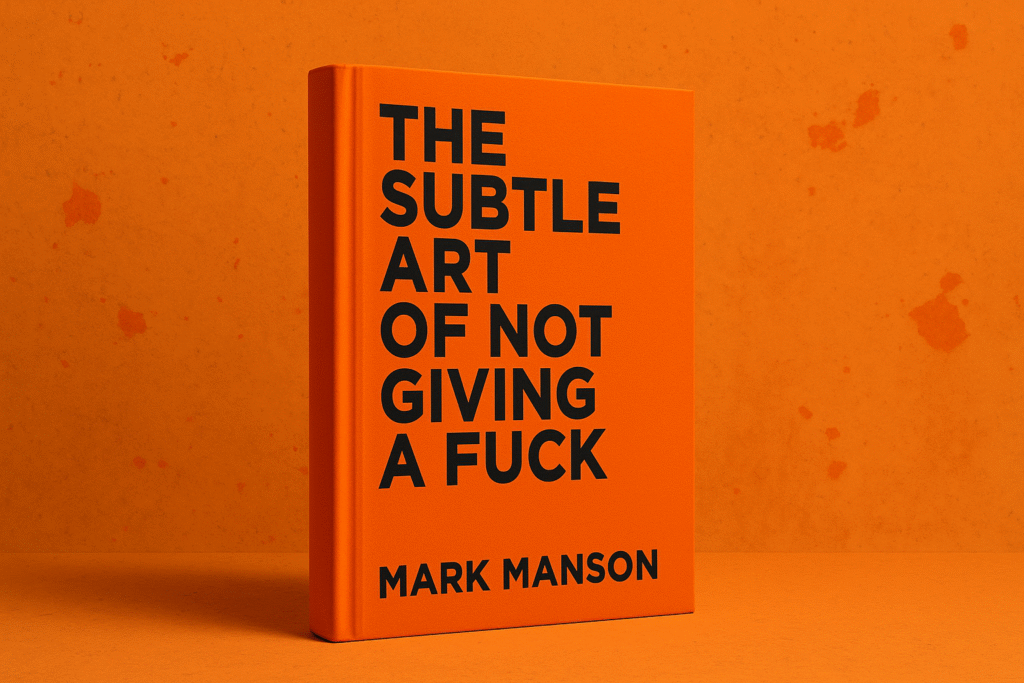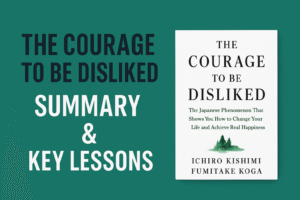In a world saturated with self-help mantras and the relentless pursuit of happiness, Mark Manson’s The Subtle Art of Not Giving a Fck* offers a refreshing and candid perspective. This book challenges the conventional wisdom of always striving for positivity and success, urging readers to focus on what truly matters to them. With over 20 million copies sold globally, Manson’s work has resonated with individuals seeking authenticity and depth in their lives.
Introduction: Rethinking the Pursuit of Happiness
Manson begins by addressing the pervasive culture of positivity that dominates modern self-help literature. He argues that the constant chase for happiness and success often leads to stress and dissatisfaction. Instead, Manson suggests that true contentment comes from choosing what to care about and letting go of the rest. This approach encourages individuals to focus on what aligns with their personal values, rather than societal expectations.
Chapter 1: Don’t Try
Drawing inspiration from Charles Bukowski’s philosophy, Manson introduces the idea that striving for constant positivity can be counterproductive. He emphasizes that embracing life’s challenges and imperfections is essential for personal growth. By accepting that life is inherently flawed, individuals can find meaning and satisfaction in their experiences.
Chapter 2: Happiness Is a Problem
Manson posits that problems are inevitable in life, and happiness is found not in their absence but in how we choose to deal with them. He encourages readers to select problems that align with their values and to accept the inherent struggles of life. This perspective shifts the focus from avoiding discomfort to embracing it as a natural part of the human experience.
Chapter 3: You Are Not Special
This chapter challenges the entitlement mindset prevalent in modern society. Manson argues that believing we are inherently special leads to unrealistic expectations and disappointment. Recognizing our ordinariness can be liberating and lead to a more grounded sense of self-worth. By accepting our limitations, we can focus on what truly matters and let go of the need for constant validation.
Chapter 4: The Value of Suffering
Manson asserts that suffering is a natural part of life and that our values determine the quality of our suffering. By choosing values that are reality-based and socially constructive, we can endure hardships that lead to personal development. This chapter encourages readers to reflect on their values and ensure they are worth the inevitable struggles they will face.
Chapter 5: You Are Always Choosing
Highlighting the importance of personal responsibility, Manson explains that we always have a choice in how we respond to situations. This autonomy empowers us to take control of our lives and make decisions that reflect our true desires. By acknowledging our agency, we can navigate life’s challenges with purpose and clarity.
Chapter 6: You’re Wrong About Everything (But So Am I)
Manson delves into the concept of uncertainty, suggesting that our beliefs and perceptions are often flawed. Embracing the possibility that we might be wrong opens the door to growth and learning. This chapter encourages readers to question their assumptions and remain open to new perspectives, fostering a mindset of continuous improvement.
Chapter 7: Failure Is the Way Forward
Failure is portrayed not as a setback but as a necessary step toward success. Manson encourages readers to view failure as an opportunity to learn and improve, rather than something to be avoided. By reframing failure as a valuable experience, individuals can build resilience and perseverance in the face of challenges.
Chapter 8: The Importance of Saying No
Setting boundaries is crucial for maintaining focus and energy. Manson discusses the importance of saying no to commitments that do not align with our values, allowing us to invest time and resources in what truly matters. This chapter emphasizes the need for discernment in our choices and the power of prioritization.
Chapter 9: …And Then You Die
In the final chapter, Manson reflects on mortality and the finite nature of life. He urges readers to consider how they want to be remembered and to live in a way that reflects their deepest values. By contemplating our own mortality, we can gain clarity on what is truly important and live with greater intention.
Key Takeaways
- Selective Caring: Focus on what truly matters to you and let go of societal pressures and superficial concerns.
- Embrace Struggle: Accept that life involves challenges and choose to engage with those that lead to personal growth.
- Personal Responsibility: Recognize that you have the power to choose your responses and take ownership of your life.
- Authenticity: Let go of the need to be special or perfect and embrace your true self.
- Boundaries: Learn to say no to protect your time and energy for what aligns with your values.
Conclusion
The Subtle Art of Not Giving a Fck* offers a refreshing perspective on personal development. By advocating for a life focused on meaningful values and authentic experiences, Manson provides readers with practical wisdom for navigating the complexities of modern life. His candid approach serves as a reminder that true fulfillment comes not from avoiding discomfort but from embracing it with purpose and clarity.




